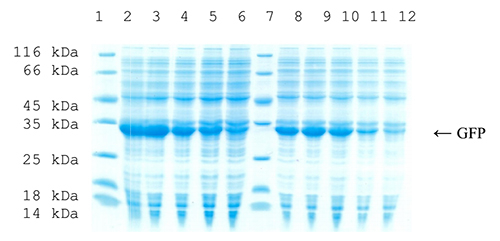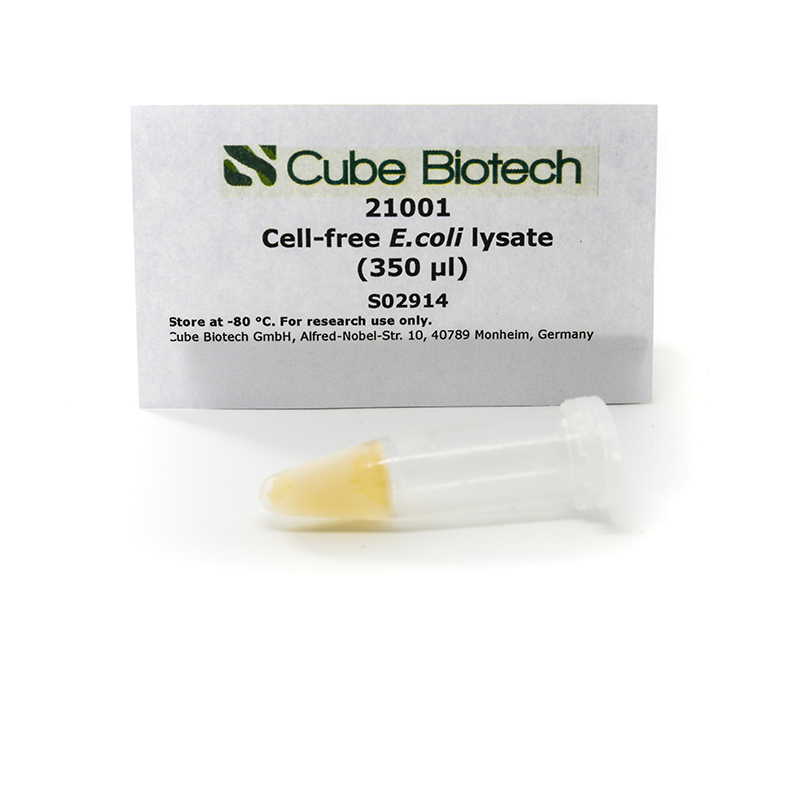Cell-free E.coli lysate
Order number: 21001
Description
Our E.coli cell-free lysates are the isolated protein purification machinery of bacterial cells. They create a high-yielding and adjustable cell-free protein expression system. The advantages of cell-free protein expression are numerous, among other things it enables a scientist to:
- For direct stabilization and co-translational integration of membrane proteins into nanodiscs
- Expression of otherwise toxic proteins
| Product | Article Number | Average Yields | Volume per vial |
|---|---|---|---|
| Cell-free E.coli lysate | 21001 | 1.3-5 mg/ml | 350 µl |
| Cell-free E.coli lysate HighYield | 21011 | >1.3-5 mg/ml | 350 µl |
| Cell-free E.coli lysate HighYield-T7 | 21031 | up to 6 mg/ml | 330 µl |
Datasheets
| Additionally required equipment & materials | |
|---|---|
| Required equipment |
|
| Additional materials & chemicals |
|
| Project specific materials |
|
Citations
Lab Results
In close collaboration with the group of Volker Doetsch and Frank Bernhard, Institute of Biophysics at the University of Frankfurt, Germany, we provide an open system that can be adapted for a range of applications, with dedicated protocols for membrane proteins, continous exchange (dialysis) reactions, and many more. This system takes more work initially than ready to use kits, but provides ultimate flexiblity in reaction variations.





